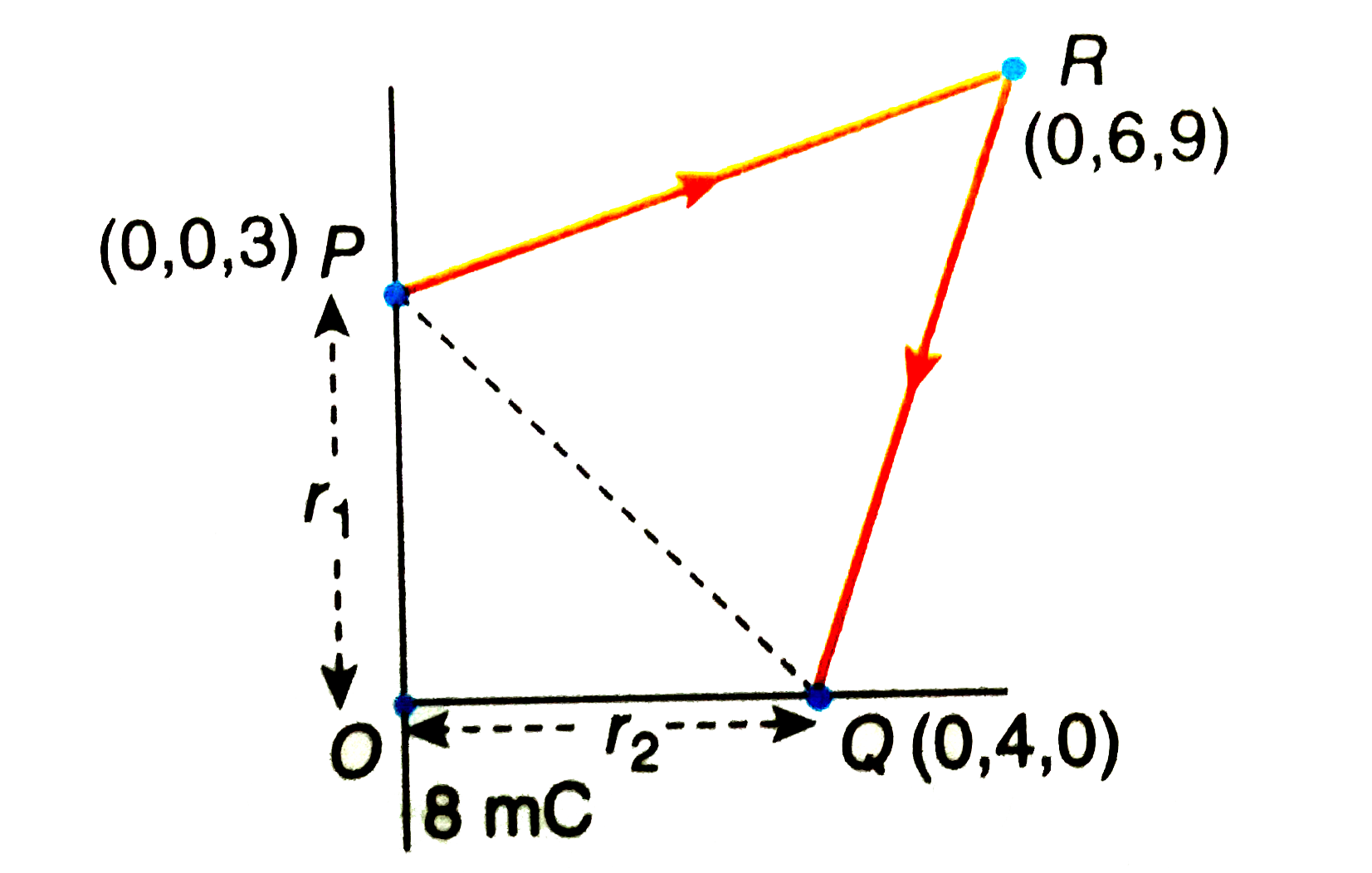Give an example of a line in the electric field of an electric dipole along which a positive charge may be moved without any work being done.Solution in Bengali
There are numerous equipotential surface in the electric field of a dipole. Any movement of a charge, on any of these surfaces, would involve no work. For example, the plane perpendicular to the dipole and passing through its mid-point is an equipotential, actually a zero-potential surface. So if a positive charge be moved along any line on this plane, no work is to be done.
Topper's Solved these Questions
- ELECTRIC POTENTIAL BOOK - CHHAYA PUBLICATIONCHAPTER - ELECTRIC POTENTIAL EXERCISE - NCERT textbook questions with answer hint
14 Videos
- ELECTRIC POTENTIAL BOOK - CHHAYA PUBLICATIONCHAPTER - ELECTRIC POTENTIAL EXERCISE - NCERT examplar questions with answer hint (MCQ -1 single option correct)
3 Videos
- ELECTRIC POTENTIAL BOOK - CHHAYA PUBLICATIONCHAPTER - ELECTRIC POTENTIAL EXERCISE - Section related questions
25 Videos
- ELECTRIC FIELDBOOK - CHHAYA PUBLICATIONCHAPTER - ELECTRIC FIELDEXERCISE - CBSE SCANNER
31 Videos
- ELECTROMAGNETIC INDUCTION & ALTERNATING CURRENTBOOK - CHHAYA PUBLICATIONCHAPTER - ELECTROMAGNETIC INDUCTION & ALTERNATING CURRENTEXERCISE - CBSE SCANNER
28 Videos
Similar Questions
A charge of 8 mC is located at origin. Calculate the work done in taking a small charge of −2×10−9C from a point P(0,0,3cm) to a point Q (0,4cm,0), via a point R (0,6cm, 9cm).

View SolutionA positively charged particle is released from rest in a uniform electric field. The electric potential energy of the charge
View SolutionWhat do you mean by potential of a charged body?
View SolutionA charge q is placed at the centre of a cube of side l. What is the electric flux passing through each face of the cube?
View SolutionA bar magnet is moved in the direction indicated by the arrow between two coils PQ and CD. Predict the directions of induced current in each coil.

View SolutionAssertion: A small electric dipole is moved translatonally from higher potential to lower potential in uniform electric field. Work done by electric is positive. Reason: When a positive charge is moved from higher potential to lower potential, work done by electric field positive.
View SolutionWhat is the work done in moving a test charge q through a distance of 1 cm along the equatorial axis of an electric dipole ?
View SolutionAssertion : No work is done in moving a charge along equatorial line. Reason : The electric potential is everywhere zero on the equatorial line of a dipole.
View Solutionविद्युत-क्षेत्र में किसी विद्युत-द्विध्रुव को घुमाने में किया गया कार्य होता है
View Solutionजब एक परीक्षण आवेश को किसी विद्युत् द्विध्रुव के निरक्ष रेखा के अनुदिश अनंत से द्विध्रुव के निकट लाया जाता है तो किया गया कार्य होगा-
View Solutionआघूर्ण p वाले किसी विधुतीय द्विध्रुव को समरूप विधुतीय क्षेत्र E की दिशा से 90∘ से घूर्णित करने में किया गया कार्य होगा (An electric dipole of moment p is lying along a uniform electric field E. The work done in rotating the dipole by 90∘ is) -
View SolutionWhat is the work done in moving a test charge q through a distance of 1 cm along the equatorial axis of an electric dipole ?
View SolutionAn electric dipole of dipole moment P is lying along uniform electric field E. The work done in rotating the dipole by 37° is
View SolutionWhat is the work done in moving a test charge q0 throught a distance of 2cm along the equatorial axis of an electric dipole?
View SolutionAn electric dipole moment oversettoP is lying along uniform electric field oversettoE . The work done in rotating the dipole by 90^@ is:
View Solution
